Lifeline trails restored to Nepal's quake-hit villages
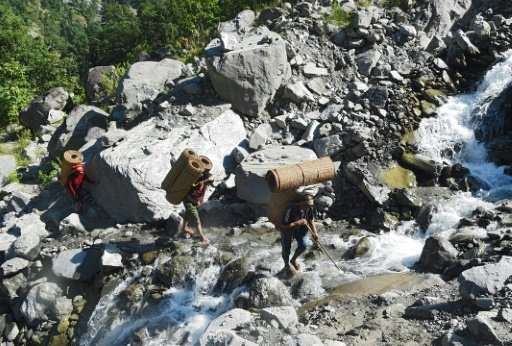
As the dust settled from Nepal's massive earthquake, a fresh humanitarian crisis was just beginning: supply lines to remote communities had been destroyed, and villagers were starving.
Without these trails used by porters and mules to ferry in goods, more than one million people living in isolated villages in central Nepal were desperately short on food.
What staples did manage to creep along these damaged lifelines to local markets quickly skyrocketed in price.
"The cost of those items once they get there becomes prohibitive, especially nutritious food," said Pippa Bradford, head of the World Food Programme in Nepal, of the areas worst-hit by the 7.8 magnitude earthquake in April 2015
In the months following the disaster, food supplies to these remote areas, already so limited before that many children suffered from stunting, all but dried up.
Mules couldn't travel on the damaged paths, meaning all goods had to be carried precariously on the backs of porters. Journeys that took one or two days doubled.
"(The trail) was scary, with big crevices, and it looked like it might slip away at any moment," said Rochit Tamang, 24, a porter from the remote Ruby Valley just 30 kilometres (19 miles) east of the quake epicentre.
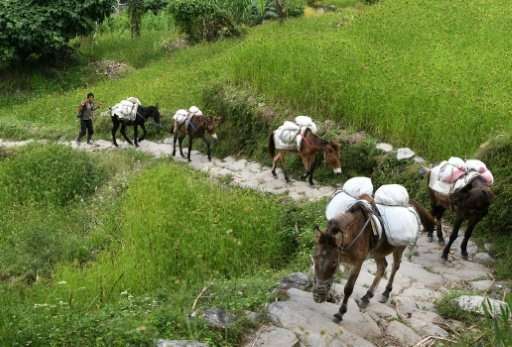
The WFP declared more than 1.1 million Nepalis "severely food insecure"—one step below famine—immediately following the earthquake, and supplies were shuttled in by helicopter to alleviate the crisis.
But as global disaster efforts shifted from emergency response to reconstruction, the choppers stopped, leaving these villages in the foothills of the Himalayas to fend for themselves.
"Even if people had some money, if they don't have a trail, they can't access the market," said Pushpa Shrestha, an engineer with WFP in Nepal.
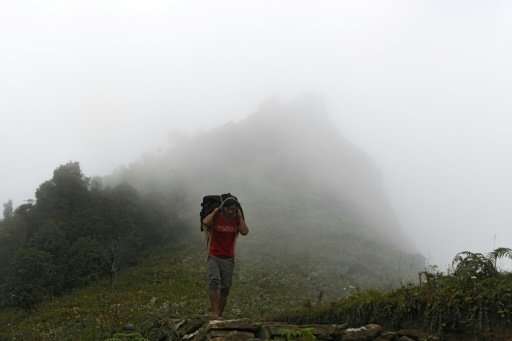
'Not fit for walking'
Two years on, these vital trails are all but restored in Nepal's four worst-hit districts through a $6 million project funded by British aid.
Goods are slowly trickling back into communities. Long mule trains laden with sacks of rice, lentils and sugar snake up steep slopes to the villages, vying for space with porters carrying everything from basics to live chicks in large whicker baskets on their backs.
"It was bad and not too fit for walking before. Now it is easy to walk. There are more mules and they are able to bring more goods," said mule owner Jitpa Tamang, who transports goods between hamlets in the Ruby Valley in Dhading district.
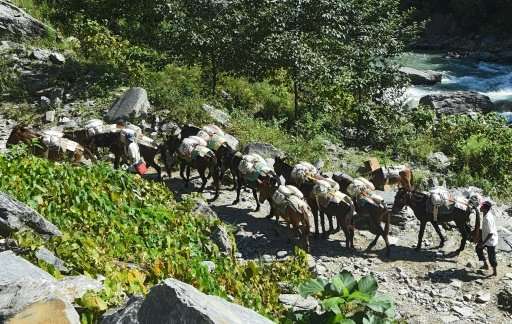
Food prices have stabilised as the journey time has reduced.
It's far from perfect though, with residents in Lapa—a village in Dhading two days walk from the road—complaining that mules owners operate like a cartel and fix prices.
In mountainous Nepal, home to eight of the world's highest peaks, around 2.6 million people—9 percent of the population—live in villages only accessible on foot, according to the United Nations.
The rugged terrain and extreme temperatures mean that communities are only able to farm the land for half the year, relying on food stocks through the winter.
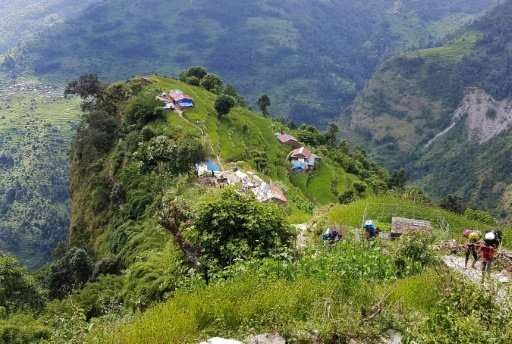
In the quake-hit districts, food stocks were destroyed in the 2015 disaster and remain perilously low after two years of erratic rain, said Shrestha of WFP.
"The local crop production in places like the northern belt of Dhading is not sufficient to ensure food security year round, so any kind of natural disaster like drought or hailstorm they become vulnerable," he said.
In the Lapa Valley, food prices fluctuate throughout the year, said Bam Tamang who owns a shop in Borang village, a two-hour walk from the road.
"The mules and porters mostly stop for three months of monsoon, so we have to pay extra transportation cost in the off season. We are failing to bring enough goods now," he said. Prices would spike again in winter with harvest seasons over, he added.
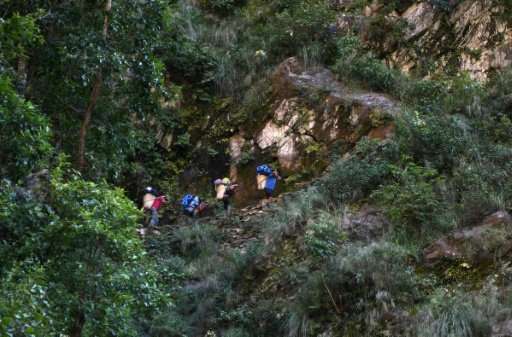
The sound of an approaching mule train gets louder, the clang of large bells dangling around their necks reverberating through the valley.
"But it has become much better for us after the trail was rebuilt," the shopkeeper said as the laden mules plodded past his shop.
© 2017 AFP


















